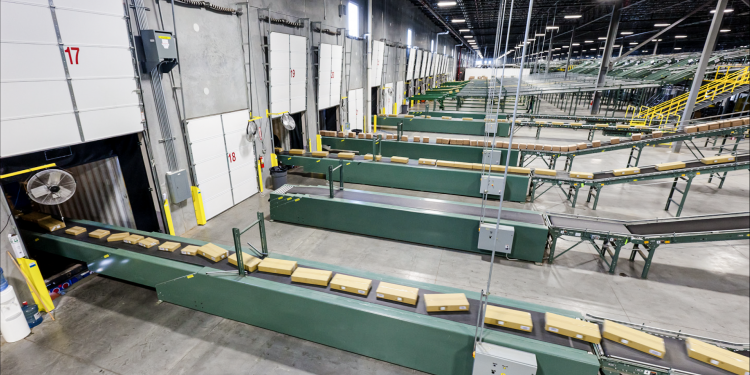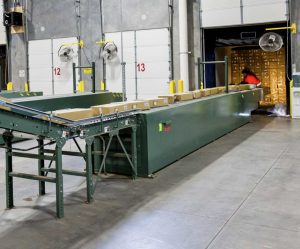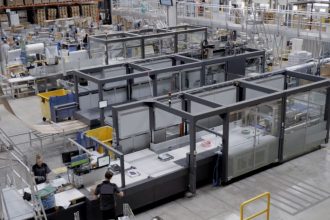Using Conveyors for Loading and Unloading Trucks & Containers

While a tried and true method, the need for conveyors on the dock is greater than ever.
The loading dock can be a crowded, busy, hectic place and for decades now, conveyors have helped make trailer loading and unloading an easier task. As operations have evolved along with shipping practices, the need for efficient operations has only increased. Conveyors have become an even more important piece of equipment as shipments come and go on the docks.
Chalk this trend up to the heavy shift toward online purchasing. Where most warehouses traditionally moved pallet loads on and off trucks, today you’re much more likely to see truckloads floor-loaded. The common theme, however, is a faster pace going onto and off the trailers.
There are advantages to floor loading instead of pallets onto trucks. One of the biggest is space savings. Where pallet loads could go onto the floor of a trailer in a single level, boxes allow for stacking. Now, instead of having lots of empty air above the pallets, by stacking boxes you can utilize the whole cube, sending out more products. This amounts to more efficient deliveries and cost savings.
If you operate by bringing pallet loads onto the truck and then breaking them down into boxes for shipping—and conversely in reverse in receiving—you’re creating more work for your already stretched labor. These processes require your staff to travel around the warehouse floor, lift and move heavy loads with or without the aid of a pallet truck, and create an ergonomically unfriendly environment.
 Conveyors are the ideal solution to mitigating these issues. When configured to load or unload a truck, conveyors can provide a smooth, steady flow of boxes into the trailer. Only one or two employees are then needed to place and stack the boxes. In short order, your staff has stacked the trailer floor to ceiling.
Conveyors are the ideal solution to mitigating these issues. When configured to load or unload a truck, conveyors can provide a smooth, steady flow of boxes into the trailer. Only one or two employees are then needed to place and stack the boxes. In short order, your staff has stacked the trailer floor to ceiling.
In reverse, on the receiving dock, employees move boxes onto the conveyors, which moves them quickly out of the trailer. The boxes then convey either to load pallets for storage, or into a sortation system to move on through the warehouse to shipping.
When it comes to the types of conveyors that best fit loading and unloading operations, a few suit the bill. The lowest investment you can make in this regard is a gravity conveyor, which helps push boxes onto the trailer. While this is low cost, it does require a bigger number of workers to assist it, knocking down your ROI. Powered roller conveyors are next, helping to reduce the need for staff assisting the operation. The highest end conveyor for loading/unloading is telescopic or other belted conveyors. These are more robust and faster operating. All are flexible so that you can extend and contract as needed.
The bottom line is that adding conveyors to your loading and unloading operations will eliminate travel, improve ergonomics, redeploy staff to other areas of the warehouse, and close the gap in the labor shortage. All add up to a rapid ROI, well worth your consideration.
To learn more about MHI’s Conveyor and Sortation Solutions Industry Group: www.mhi.org/conv
For more articles and podcasts about Conveyors and Sortation:
Podcast: CSS – HOW TO AUTOMATE FOR THOSE WHO HAVEN’T AUTOMATED
Reconfigurable Conveyors For The Win
The Importance Of Digitization In Material Handling
Why You Should Consider Decentralized Networks
Podcast: CSS – HOW TO AUTOMATE FOR THOSE WHO HAVEN’T …
Electrical Motor Standard Differences
From Preventative To Predictive Maintenance Of Automation
Large Parcel Shipping Is Growing



